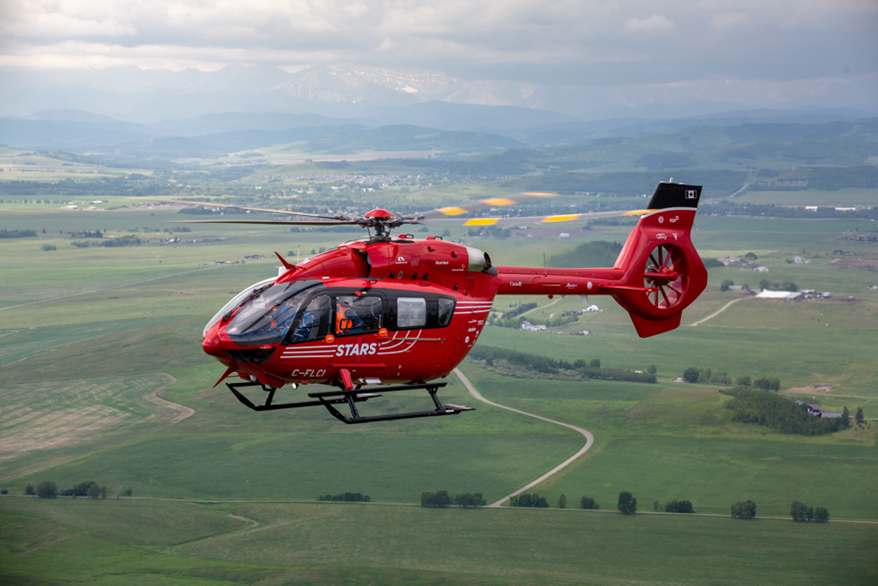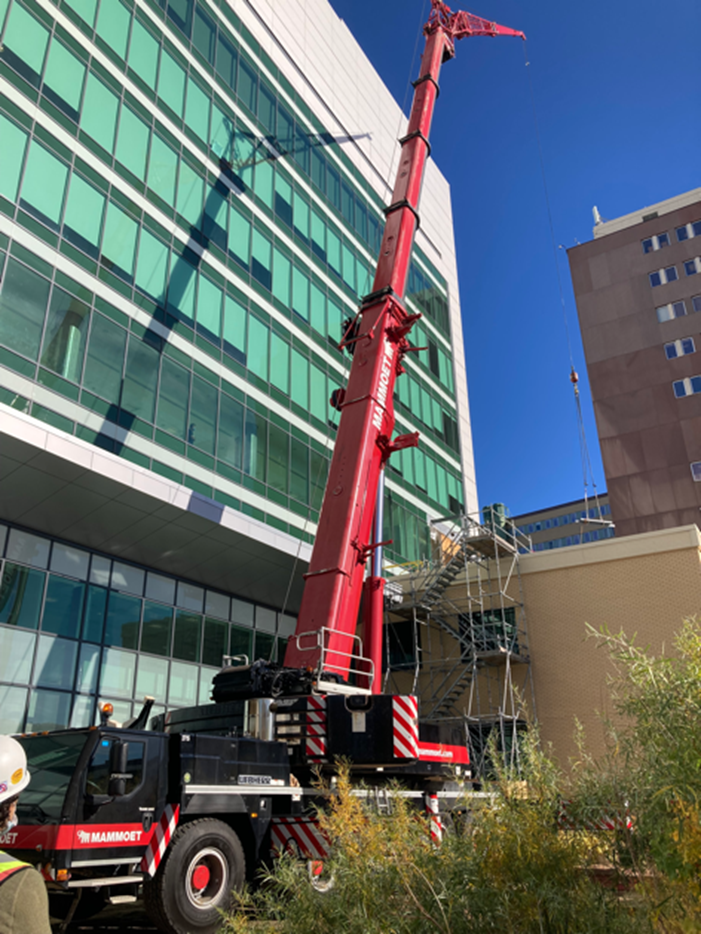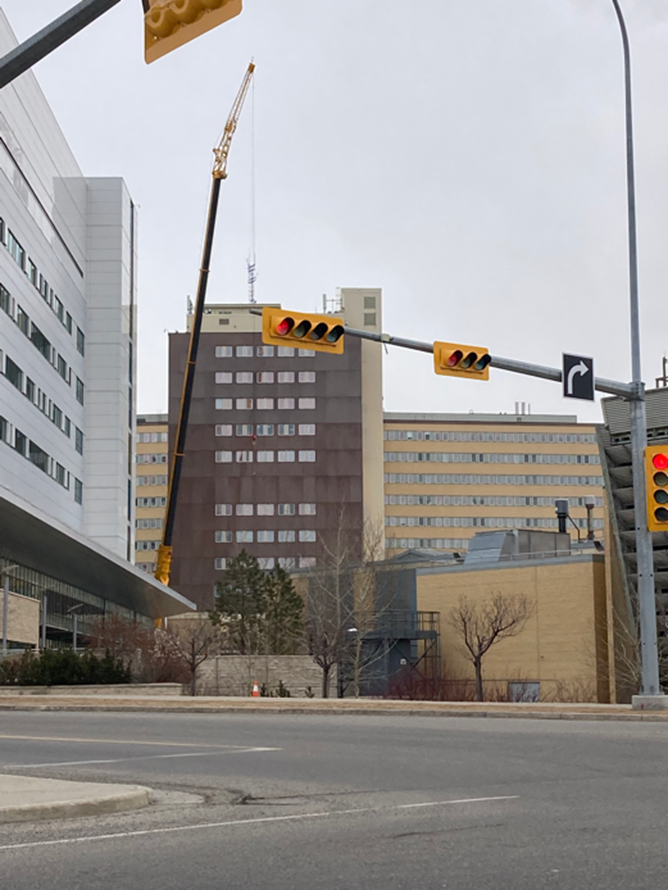by Mirette Dubé, John Griffiths, Janice Cullen, Maxine Gruener, Nick Pettipas, Michael Suddes, Aviva Sheckter, Ron German
STARS Air Ambulance
Simulation is the recreation of a real-to-life situation, state of affairs, space, or process. Traditionally, healthcare simulation was focused on training teams in crisis resource management and medical management. Simulation, which includes expert debriefing, encompasses a range of activities that share a broad, similar purpose, which includes to improve the safety, effectiveness, and efficiency of services and to integrate people with their system. Safety science is shifting to more proactive strategies such as simulation to identify and mitigate harm within healthcare and other industries. Historically, where simulation programs may have been considered ancillary to healthcare organizations, there has been a rapid acceptance and evidence informed transition of simulation as a necessity to high reliability organizations over the past 10 to 15 years. Using simulation ensures that all team members know in advance what they are expected to do; they can practice within any system, process, or even work in a given space while testing assumptions; they are comfortable and confident with the execution of their next steps and the steps of others; and they can ensure that the plans and tools hold together under the stress of any circumstance. Simulation identifies systems issues and latent threats to safety that otherwise would go unnoticed until the unthinkable happens. When multiple members of the team have an opportunity to practice through simulation, rather than in a high-pressure real-life situation initially, relationships and trust have an opportunity to be formed and carried into the real-life, higher-pressure situations that follow.
Now consider simulation in the context of our real-life high-risk process and case example. Perhaps the risk associated with flying a helicopter for landing at a hospital heliport to deliver a critically ill patient, or to pick up a key staff member to transport them to the scene of an accident is routine and obvious. After all, this happens all over the world.
Then consider the added complexity of a construction crane situated near the helipad or nearby hospital and its influence on the many responsible team members. Consider the operating procedures in place for the helicopter flight crews. Factor in the processes for health care teams. Layer onto this the requirements upon the construction teams, and how the systems each of these teams use either enable or create barriers to how they function within their role and the resulting outcomes that ensue. This “thinking in systems” is the foundation behind why we need to look wholistically at the many complex elements of a system and how they work together before making our best analysis of a situation.
McCaig Link Project
October 2022
Our project was directly applied to the safety, risk mitigation, and quality improvement for system performance and resilience. Our work brought together representatives from five different organizations in Alberta involved in aviation (STARS Link Center), simulation (eSIM), construction (Ellis Don), medicine and leadership (Alberta Health Services), crane operation (Mammoet), Protective Services (Alberta Health Services) and Heliport consulting services. These organizations were used in simulation to test the communication pathways between the helicopter pilot, the communication hub, protective services, the helipad management and security team, the construction site superintendent, and the crane operator. We wanted to test, using simulation, the complex communication that might occur in various scenarios before we implemented the final plan. This interaction of complex communication would occur every time the helicopter would land at our trauma center (Foothills Medical Center). Simulation is one of the best ways to uncover the difference between work as we imagine it will occur (i.e., as written on paper or discussed in a meeting), to how it actually occurs, encompassing all the human and system factors at play.
In this case example, multiple questions arise, such as:
- How does the crane operator know when the helicopter is landing?
- How does the helipad manager and multiple hospital protective services staff respond, and have they been adequately trained in the process and communication pathways?
- Does the entire collaborative team of organizational representatives understand the implications of a helicopter crew flying near a crane?
- What about the downdraft of air from a helicopter on a crane and how it may impact the stabilization of the crane and its load?
- Does everyone involved understand the risks to the flight crew and patients, construction crew on the ground, and to staff, patients and visitors under the path of a crane carrying heavy construction materials?
- What about the load of the crane and impact of the wind on any given day?
- And then together, how does each of these micro-teams and elements work together to prevent a major potential catastrophe from occurring?
- How does each organization ensure the safety of all systems, the buildings, and the staff and patients that could be affected?
McCaig Link Project
October 2022
Any gaps in communication, process or near misses pose the highest risk to everyone involved, and potentially the loss of life. If we want a resilient system, how can we analyze what works well to ensure everyone knows that too?
Yet, despite the risks, there are significant gaps in how multi-agencies come together or “integrate” within a system to first test their processes and ensure (not just assume) safety, efficiency, and operational infrastructure are in place. How can we be sure that people understand the risks and their roles; that they have clear cognitive aids to follow a process and communication pathway; and that we have a means in which we always test prior to implementation? We must take into consideration the role of simulation in this context as a ‘field test’ before launch.
Various simulation scenarios were co-developed with all stakeholders during a one-week timeframe (as to not delay the construction schedule or have any impact on flights) and lead by a simulation consultant specializing in systems simulation. Examples included the notice of arrival of the helicopter within 15 minutes with a critically ill patient on board, or while the crane was fully extended up and transporting material. Real time communication occurred using the designed pathways between all the various parties involved in the process. Communication pathways were tested and validated, flow process maps were developed and standardized in order to train the many staff involved. Roles were clarified and relationships between the various independent organizations and participants were forged. Most importantly, confidence was built in the roles and responsibilities of each party and their ability to manage the potential conflicts in crane position and helicopter arrival.
During post implementation, additional scenarios arose which enabled the teams the ability to rapidly connect with each other and practice further landing approaches, explore additional improvement efforts, and make much quicker decisions together. Simulation was extremely valuable for all teams to ensure safety, efficiency, and effective process. When risks are so incredibly high, the return on investment does not necessarily need to be calculated in cost savings, but rather in the prevention of catastrophic events, the safety of staff and patients, the confidence to work effectively in your role, and to ensure there are no delays to critical lifesaving care in the healthcare and other settings. It was noted that this was the first time a multi-stakeholder collaboration, with revision specific communication pathways, and pre-implementation simulation have been used for the aviation organization and hospital helipads. There are 13 helipads at tertiary care hospitals in Western Canada and so many more internationally. In future, this model provides a template and standard for which to manage multi-stakeholder risk mitigation in similar circumstances and beyond.
In the end, no one system functions in silos and using simulation to integrate systems and processes is the sure way of the future.
Acknowledgements: The author team would like to acknowledge all of the team members involved in the simulations and for their commitment to safety and systems testing using simulation. Thanks to Darren Emes (Heliport manager, FMC) for his contributions.
Affiliations:
- Mirette Dubé, Simulation project lead—eSIM Provincial Simulation Program, Alberta Health Services
- Maxine Gruener—eSIM Provincial Simulation Program, Alberta Health Services
- Nick Pettipas—EllisDon Construction Services
- Janice Cullen—Senior Project Director, Calgary Cancer Project
- Ron German—Heliport Consulting Services
- John Griffiths, Director, STARS Emergency Link Centre, STARS Air Ambulance
- Michael Suddes—Executive Director, Foothills Medical Centre, Calgary, Alberta, Canada
- Aviva Sheckter—Protective Services Site Manager, Foothills Medical Centre, Calgary, Alberta, Canada
Disclosure Statements: MD is the CEO and simulation consultant for a Healthcare Systems simulation incorporation which provides systems simulation education and consulting services.


